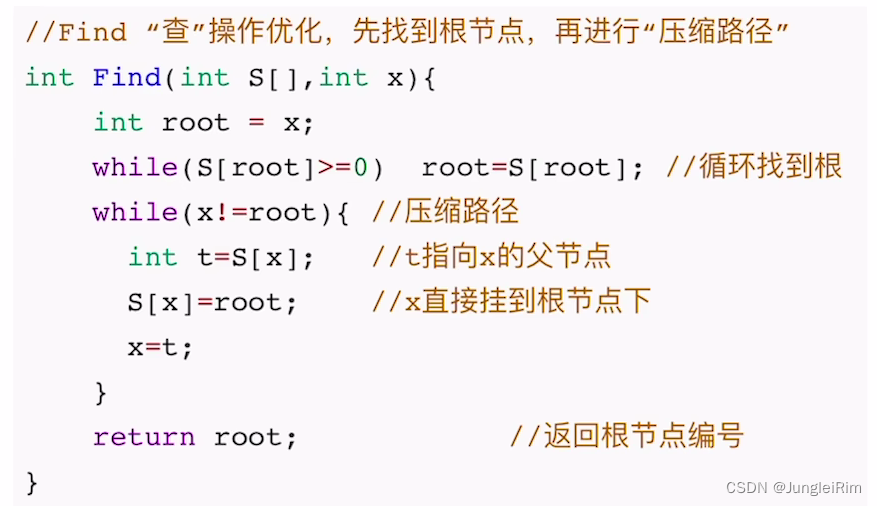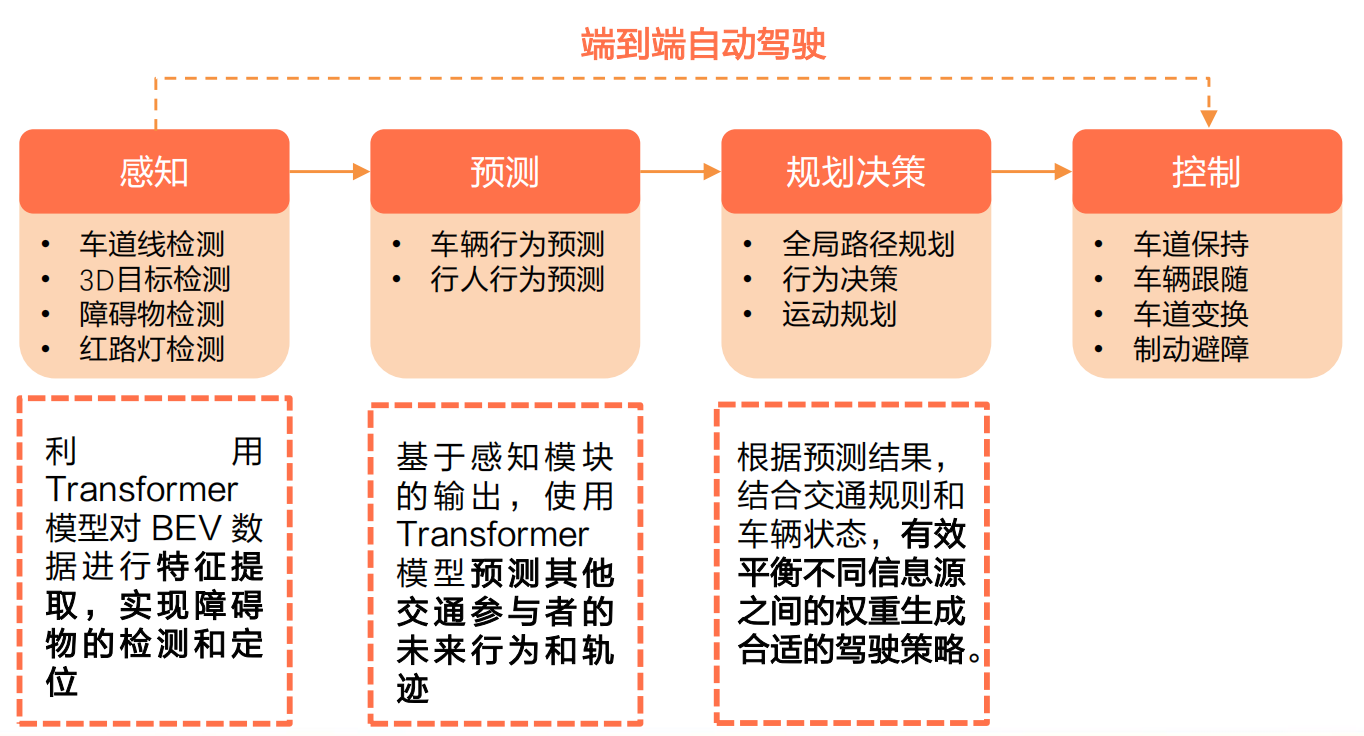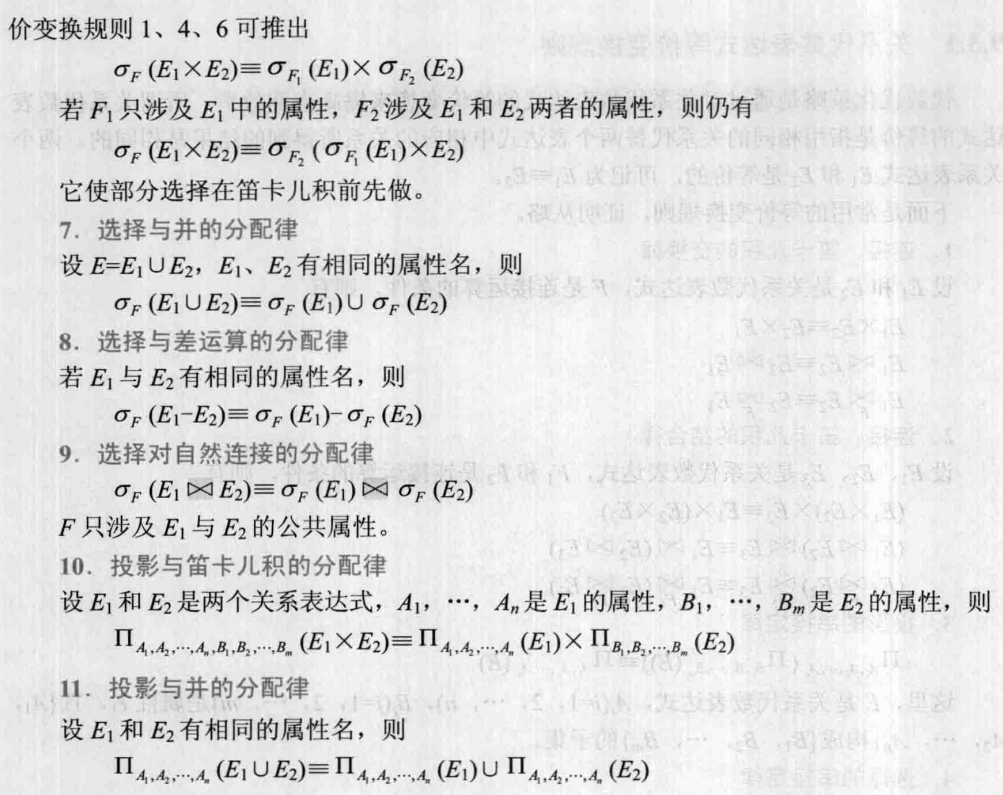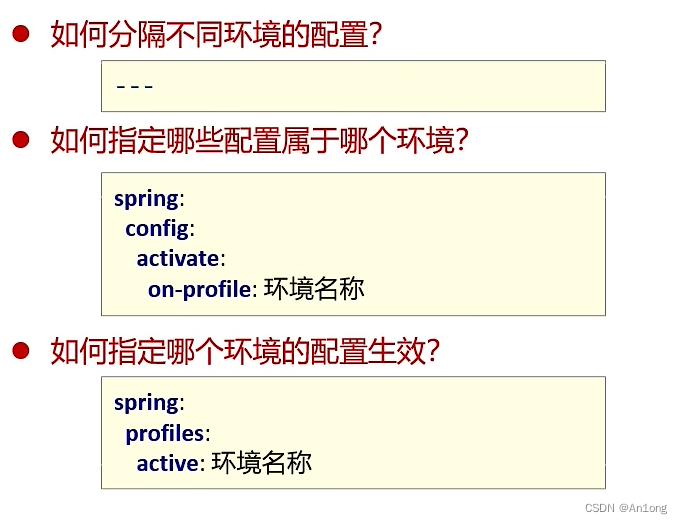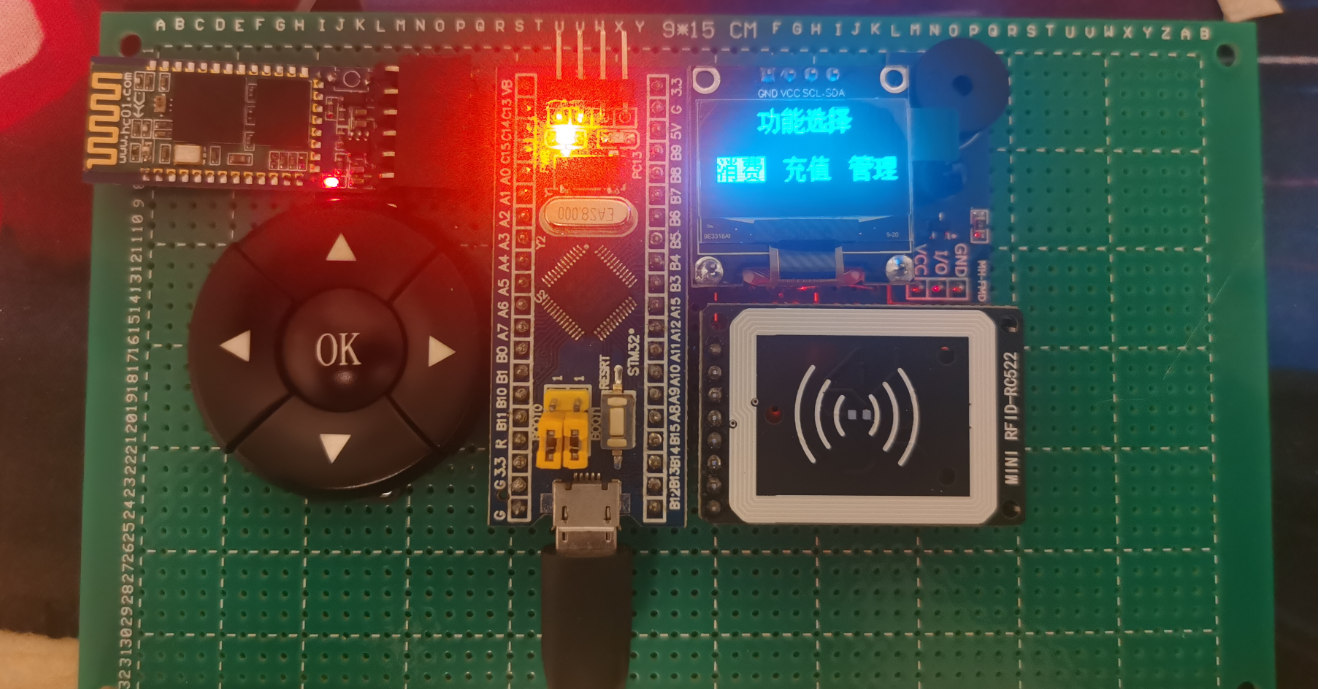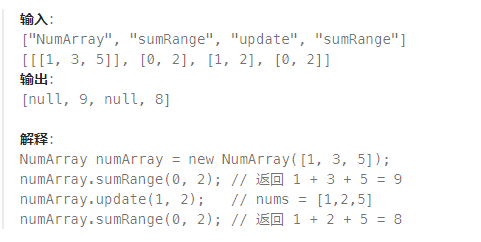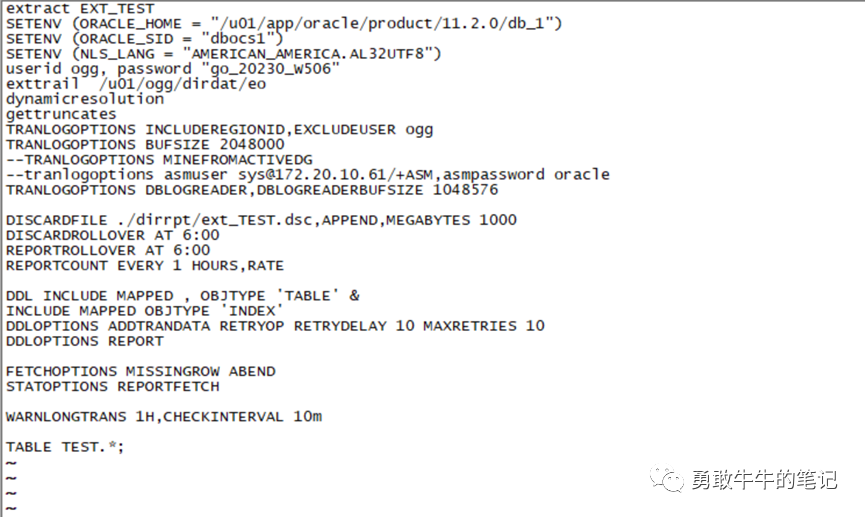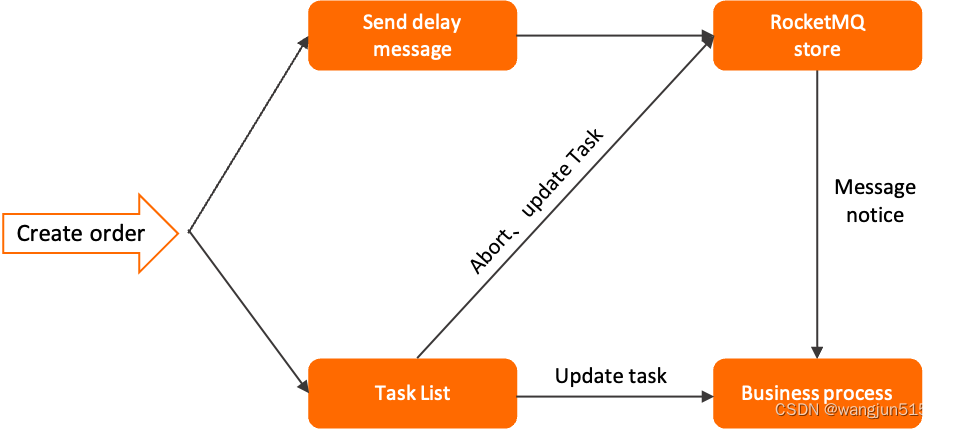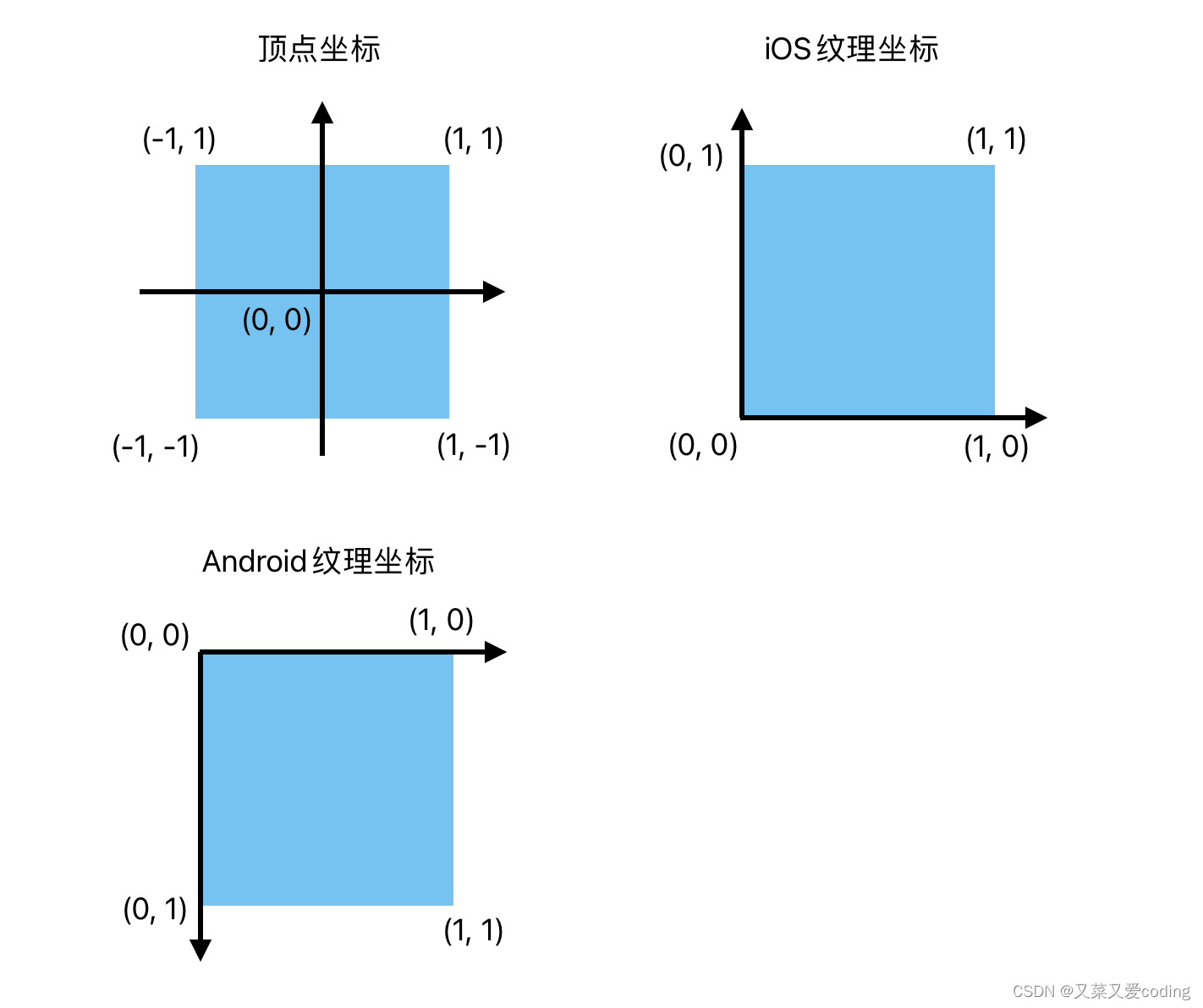数据结构 | 栈的实现
文章目录
- 数据结构 | 栈的实现
- 栈的概念及结构
- 栈的实现
- 需要实现的函数
- 初始化栈
- 入栈
- 出栈
- 获取栈顶元素
- 获取栈中有效元素个数
- 检测栈是否为空
- 销毁栈
- Stack.c
栈的概念及结构
- 栈:一种特殊的线性表,其只允许在固定的一端进行插入和删除元素操作。进行数据插入和删除操作的一端称为栈顶,另一端称为栈底。栈中的数据元素遵守后进先出
LIFO(Last In First Out)的原则。 - 压栈:栈的插入操作叫做进栈/压栈/入栈,入数据在栈顶。
- 出栈:栈的删除操作叫做出栈。出数据也在栈顶。
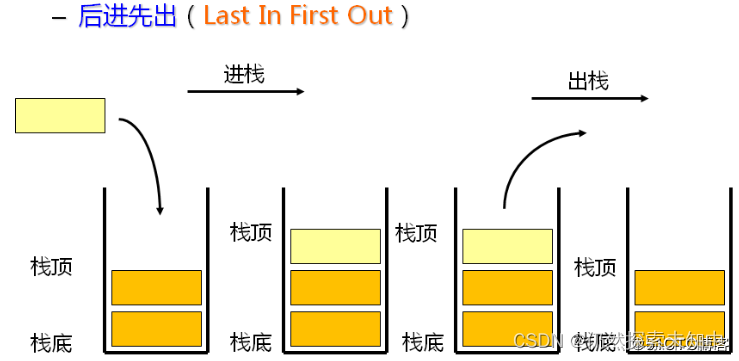
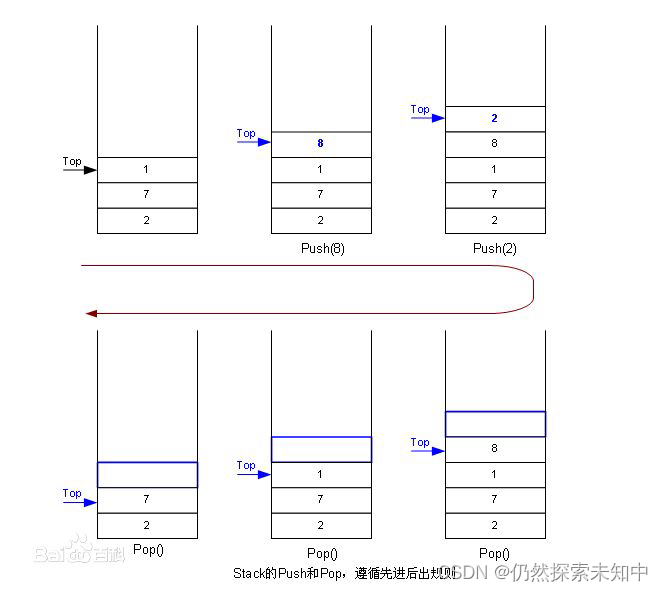
栈的实现
- 栈的实现一般可以使用数组或者链表实现,相对而言数组的结构实现更优一些。因为数组在尾上插入数据的代价比较小。

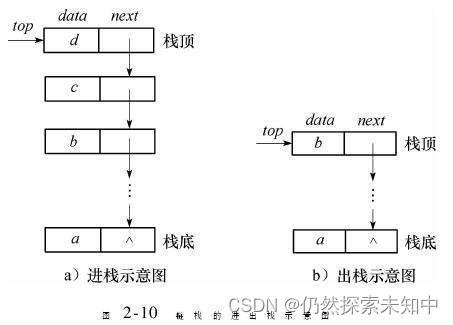
需要实现的函数
Stack.h
#pragma once
#include<stdio.h>
#include<assert.h>
#include<stdlib.h>
#include<stdbool.h>
typedef int STDataType;
typedef struct Stack
{
STDataType* a;
int top;
int capacity;
}ST;
// 初始化栈
void StackInit(ST* ps);
// 入栈
void StackPush(ST* ps, STDataType x);
// 出栈
void StackPop(ST* ps);
// 获取栈顶元素
STDataType StackTop(ST* ps);
// 获取栈中有效元素个数
int StackSize(ST* ps);
// 检测栈是否为空,如果为空返回非零结果,如果不为空返回0
bool StackEmpty(ST* ps);
// 销毁栈
void StackDestroy(ST* ps);
Stack.c
初始化栈
void StackInit(ST* ps)
{
assert(ps);
ps->a = NULL;
ps->capacity = 0;
ps->top = 0;
}
入栈
void StackPush(ST* ps, STDataType x)
{
assert(ps);
if (ps->capacity == ps->top)
{
STDataType newcapacity = ps->capacity == 0 ? 4 : ps->capacity * 2;
STDataType* tmp = (STDataType*)realloc(ps->a, sizeof(STDataType) * newcapacity);
if (tmp == NULL)
{
perror("relloc fail!\n");
exit(-1);
}
ps->a = tmp;
ps->capacity = newcapacity;
}
ps->a[ps->top] = x;
ps->top++;
}
出栈
void StackPop(ST* ps)
{
assert(ps);
assert(ps->top > 0);
ps->top--;
}
获取栈顶元素
STDataType StackTop(ST* ps)
{
assert(ps);
assert(ps->top > 0);
return ps->a[ps->top - 1];
}
获取栈中有效元素个数
int StackSize(ST* ps)
{
assert(ps);
return ps->top;
}
检测栈是否为空
bool StackEmpty(ST* ps)
{
assert(ps);
return ps->top == 0;
}
销毁栈
void StackDestroy(ST* ps)
{
assert(ps);
ps->a = NULL;
ps->capacity = ps->top = 0;
}
Stack.c
#define _CRT_SECURE_NO_WARNINGS 1
#include"Stack.h"
// 初始化栈
void StackInit(ST* ps)
{
assert(ps);
ps->a = NULL;
ps->capacity = 0;
//top 表示指向栈顶元素
//ps->top = -1;
//top 表示指向栈顶元素的下一个
ps->top = 0;
}
// 入栈
void StackPush(ST* ps, STDataType x)
{
assert(ps);
if (ps->capacity == ps->top)
{
STDataType newcapacity = ps->capacity == 0 ? 4 : ps->capacity * 2;
STDataType* tmp = (STDataType*)realloc(ps->a, sizeof(STDataType) * newcapacity);
if (tmp == NULL)
{
perror("relloc fail!\n");
exit(-1);
}
ps->a = tmp;
ps->capacity = newcapacity;
}
ps->a[ps->top] = x;
ps->top++;
}
// 出栈
void StackPop(ST* ps)
{
assert(ps);
assert(ps->top > 0);
ps->top--;
}
// 获取栈顶元素
STDataType StackTop(ST* ps)
{
assert(ps);
assert(ps->top > 0);
return ps->a[ps->top - 1];
}
// 获取栈中有效元素个数
int StackSize(ST* ps)
{
assert(ps);
return ps->top;
}
// 检测栈是否为空,如果为空返回非零结果,如果不为空返回0
bool StackEmpty(ST* ps)
{
assert(ps);
return ps->top == 0;
}
// 销毁栈
void StackDestroy(ST* ps)
{
assert(ps);
ps->a = NULL;
ps->capacity = ps->top = 0;
}
好了,栈的实现就到这里结束了,有用的话点个赞吧~~

